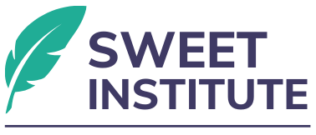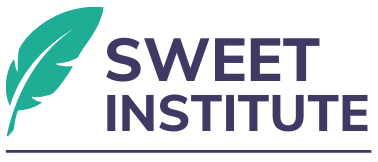Solution-Focused Brief Therapy: Goal Orientation

Solution-Focused Brief Therapy: Goal Orientation
Solution-Focused Brief Therapy (SFBT) is a therapeutic approach that emphasizes identifying and achieving specific goals.[1] Developed by Steve de Shazer and Insoo Kim Berg in the late 1970s, SFBT is centered on the idea that focusing on solutions and setting clear goals leads to more effective and efficient therapy.
Goal Orientation in SFBT
Why Goal Orientation?
- Clarity and Direction
Setting clear goals provides clients with a sense of direction and purpose. Goals act as a roadmap, guiding clients through the therapeutic process and helping them stay focused on what they want to achieve. - Measurable Progress
Goals provide a concrete way to measure progress. By setting specific, measurable objectives, clients and therapists can track improvements and celebrate successes, which reinforces motivation and engagement.[2] - Motivation and Engagement
Clearly defined goals help clients stay motivated[3] and engaged in therapy. Knowing what they are working towards can provide a sense of hope and encourage clients to take actionable steps toward their desired outcomes. - Empowerment and Self-Efficacy
Achieving goals empowers clients by demonstrating their ability to effect change in their lives. This boost in self-efficacy can enhance clients’ confidence and foster a positive, proactive attitude towards overcoming challenges.
Techniques for Goal Setting in SFBT
The Miracle Question
This technique helps clients envision their ideal future and identify specific goals.[4] The miracle question asks clients to imagine a scenario where their problem is miraculously resolved overnight and to describe what would be different.
Example: “If you woke up tomorrow and your problem was completely gone, what would be different? How would you know things had changed?”
SMART Goals
Goals should be Specific, Measurable, Achievable, Relevant, and Time-bound. This framework helps clients set realistic and actionable objectives that can be tracked and achieved within a specified timeframe.[5]
Example: “Instead of saying ‘I want to be happier,’ a SMART goal would be ‘I will spend 30 minutes exercising three times a week for the next month to improve my mood.'”
Scaling Questions
These questions help clients assess their current situation and set goals for improvement. Clients rate their progress or the severity of their issue on a scale (e.g., 1 to 10) and identify steps to move up the scale.
Example: “On a scale of 1 to 10, how would you rate your current level of stress? What would it take to move from a 5 to a 6?”
Exception-Finding Questions
Therapists ask clients to identify times when their problem was less severe or absent. Understanding these exceptions[6] can help clients set goals based on what has worked for them in the past.
Example: “Can you think of a time when you felt less anxious? What was different about that time, and how can we set goals to replicate those conditions?”
Future-Oriented Questions
These questions encourage clients to think about their future and set goals that align with their long-term vision. Clients are asked to describe their desired future and the steps needed to achieve it.
Example: “What do you see yourself doing in five years? What goals can we set now to help you reach that future?”
Benefits of Goal Orientation in SFBT
Focus and Efficiency
Goal orientation helps streamline the therapeutic process by keeping sessions focused on achieving specific outcomes. This efficiency[7] can lead to quicker and more tangible results.
Positive Reinforcement
Setting and achieving goals provides clients with regular opportunities for positive reinforcement. Celebrating successes, no matter how small, can boost clients’ morale and encourage continued effort.[8]
Client Empowerment
Goal setting places clients in an active role, empowering them to take control of their therapeutic journey. This sense of ownership can enhance clients’ commitment to the process and their confidence in their ability to change.
Structured Approach
A goal-oriented approach provides structure to therapy sessions, ensuring that each session is purposeful and productive. This structure can be particularly beneficial for clients who thrive with clear expectations and a defined path forward.
In conclusion, goal orientation is a fundamental aspect of Solution-Focused Brief Therapy that enhances clarity, motivation, and efficiency in the therapeutic process. By setting specific, measurable, and achievable goals, clients can focus on creating positive change in their lives. This approach not only fosters a sense of empowerment and self-efficacy but also provides a structured and efficient path to achieving meaningful and lasting outcomes.
[1] Franklin, Cynthia, ed. Solution-focused brief therapy: A handbook of evidence-based practice. Oxford University Press, 2012.
[2] Steenbarger, Brett N. “Solution-focused brief therapy: Doing what works.” (2004).
[3] Jaradat, Abdul-Kareem M., and Nour A. Ababneh. “Reducing Boredom Proneness & Enhancing Intrinsic Motivation Through a Solution-focused Brief Therapy Program.” North American Journal of Psychology 23.1 (2021).
[4] De Shazer, Steve, et al. More than miracles: The state of the art of solution-focused brief therapy. Routledge, 2021.
[5] Holland, Carol E. Buchholz. “Using Solution-Focused Brief Counseling.” School-Based Family Counseling with Refugees and Immigrants. Routledge, 2022. 131-149.
[6] Neipp, Marie‐Carmen, et al. “Solution‐focused versus problem‐focused questions: Differential effects of miracles, exceptions and scales.” Journal of Family Therapy 43.4 (2021): 728-747.
[7] Kim, Johnny S. “Examining the effectiveness of solution-focused brief therapy: A meta-analysis.” Research on Social Work Practice 18.2 (2008): 107-116.
[8] de Shazer, Steve. “Solution-focused brief therapy.” Solution-Focused Substance Abuse Treatment (2011): 17.






